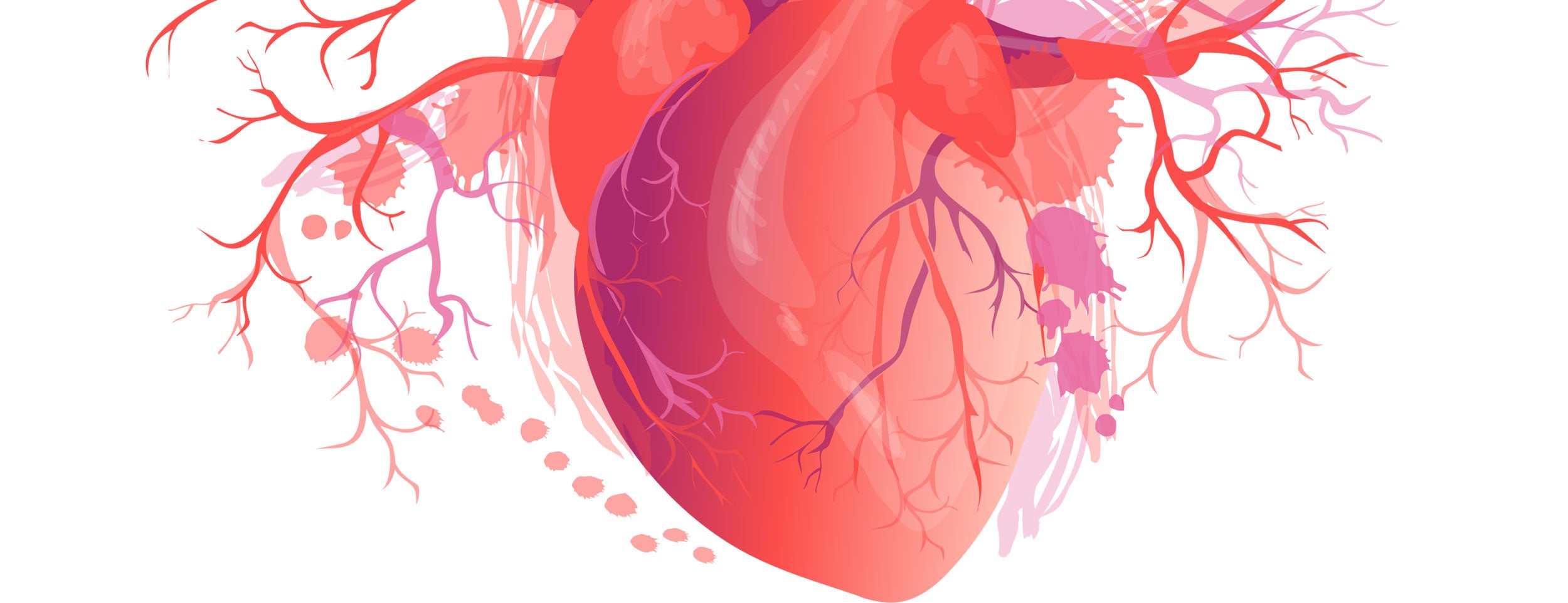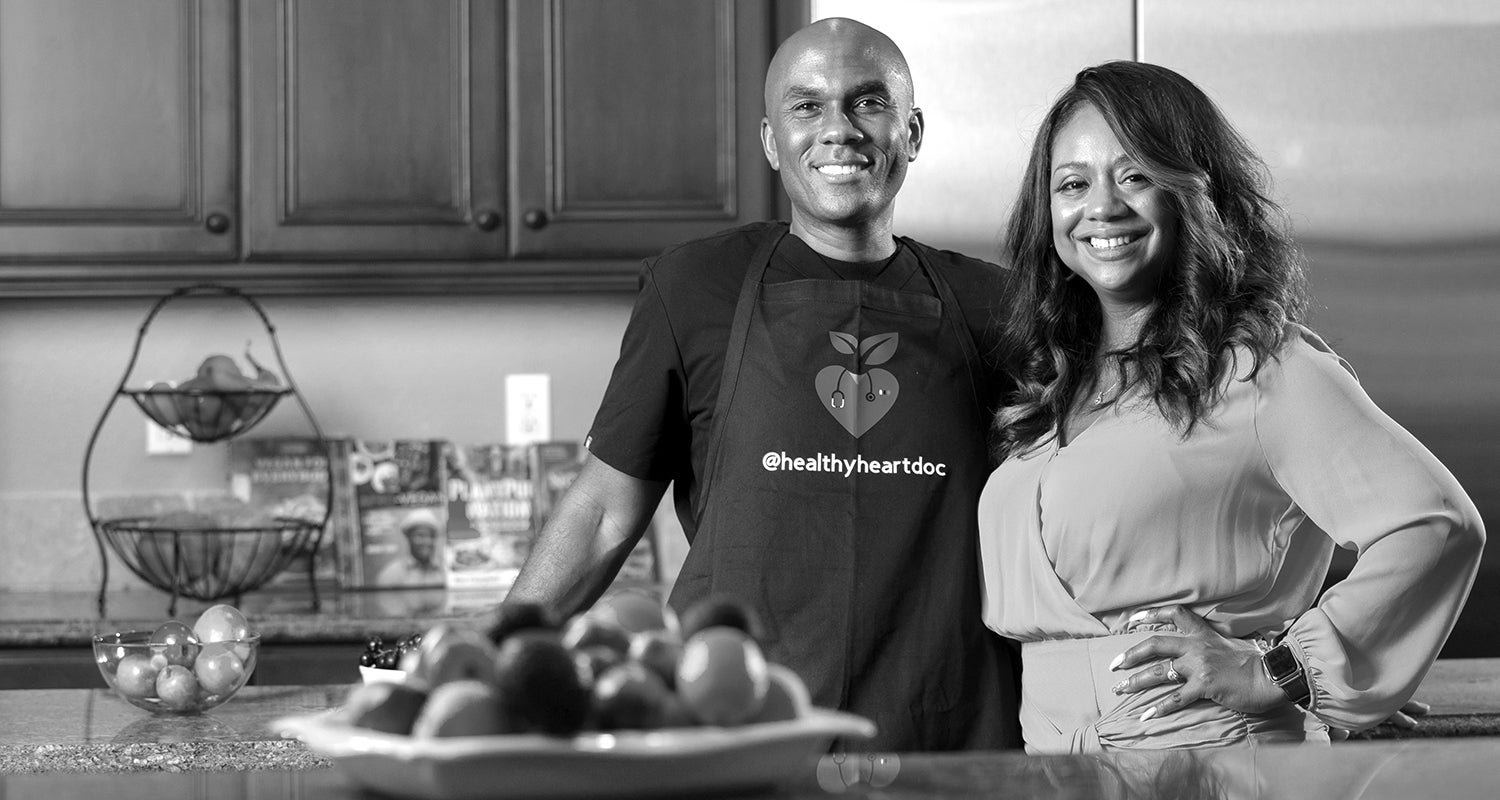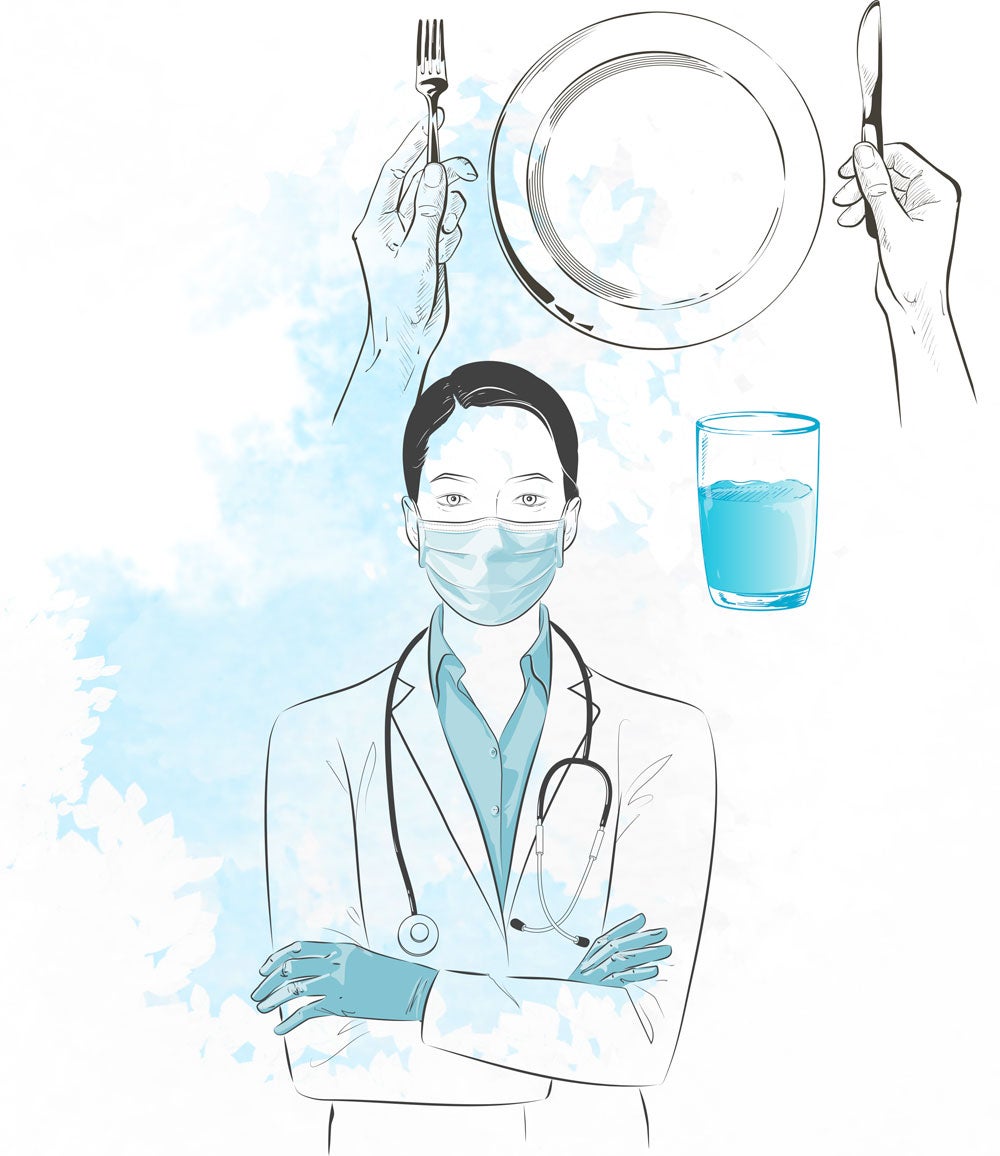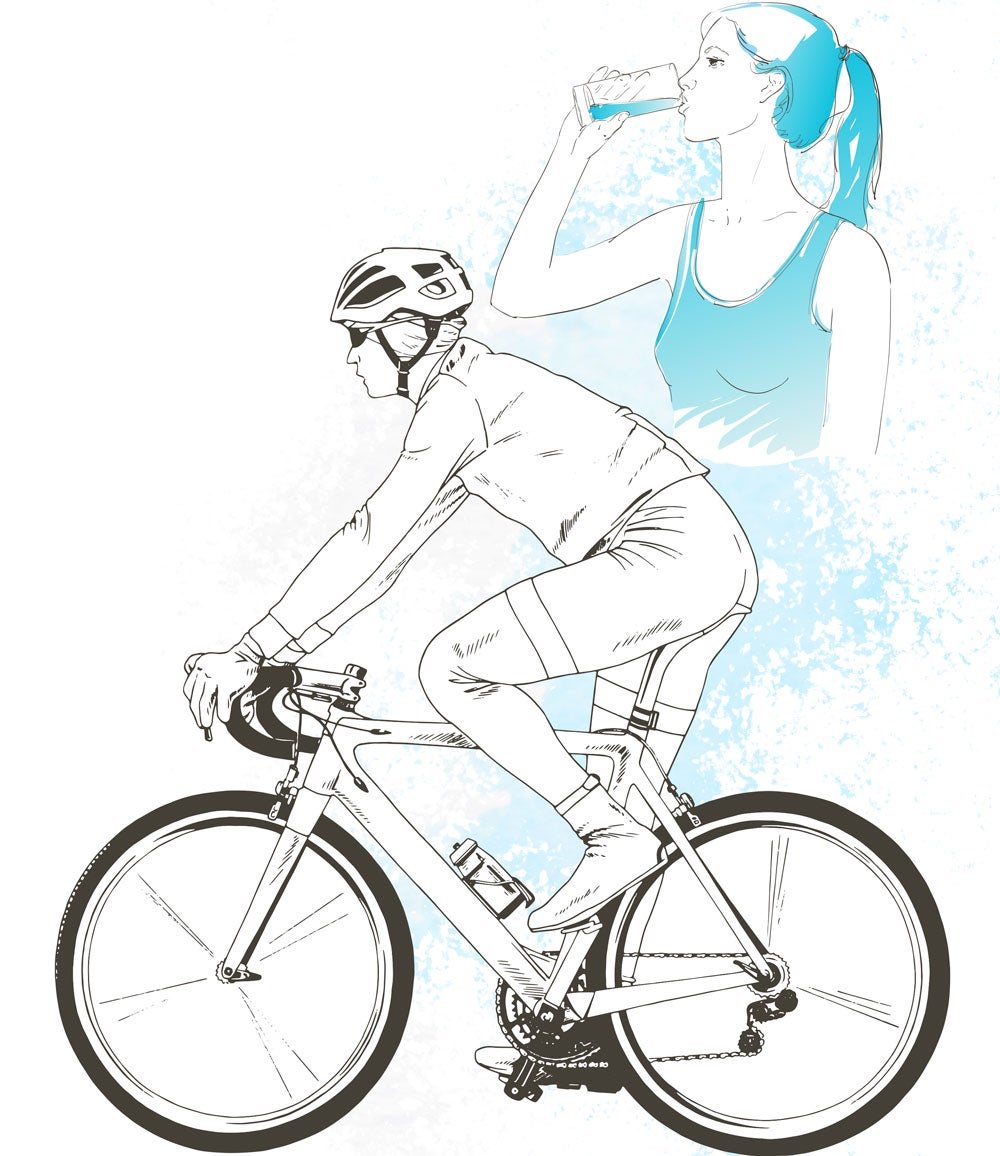MATTERS OF THE HEART
Living in a “blue zone” changed this UCR cardiologist’s life,
and he wants to help you do the same.
By Robin Keats
r. Columbus Batiste, a cardiologist and assistant clinical professor at the UCR School of Medicine, is committed to a future with fewer angioplasties, stent insertions, valve replacements, and other heart procedures. As chief of cardiology at Kaiser-Permanente Riverside and Moreno Valley hospitals, he and his wife, Danette, have initiated nonprofit campaigns to educate people in food deserts, such as the one in Compton where he grew up and those in the Inland Empire, how best to avoid the operating room.
Batiste’s latest effort is the Slave Food Project. Raised as a Seventh Day Adventist, Batiste learned about the denomination’s advocacy of a plant-based diet and abstinence from sweets, alcohol, and tobacco. He became aware of what a food desert lacks while on bus rides as a child with his father to purchase fresh fruits and vegetables in areas where they were available. After receiving his undergraduate degree from Oakwood University in Alabama, he pursued his medical degree at Loma Linda University in San Bernardino County, where he also did his residency. The city of Loma Linda is a locus of Seventh Day Adventism and also one of the world’s five “blue zones,” places whose inhabitants live much longer than they do elsewhere. While there, Batiste was surrounded by evidence of how diet impacts lifespan. As a doctor, he has evolved from interventional cardiology to a practice that emphatically promotes prevention.
“How can we have a grassroots movement to change the value structure within the medical profession that equally highlights lifestyle — not as an alternative but as a primary, intentional therapy?” he said of his goal.
Through the Slave Food Project, Batiste creates YouTube videos and Facebook Live presentations for communities of color where food deserts are the habitat, blue zones a mirage, and “slave food” still the overwhelming choice. The term, he said, is defined historically as throw-away food once deemed fit only for slaves; these days, it describes food to which the body has become a slave. Enlisting guest experts and chefs, he discusses the reliance on minimarkets, liquor stores, and gas stations for highly processed, starchy foods often washed down with sugary drinks. With the COVID-19 pandemic’s grim reaping of so many with pre-existing conditions such as diabetes, hypertension, obesity, and other co-morbidities brought on by diet, Batiste’s activism has gone into overdrive. Here are some suggestions from the doctor for keeping your heart healthy.
Dr. Columbus Batiste and his wife Danette at their home in Corona. (UCR/Stan Lim)
HYDRATE, HYDRATE, HYDRATE
Replace your soda and sugary juices with water. Dehydration increases stress hormones and is associated with multiple diseases.
FRY LESS, BAKE MORE
Studies show fried foods increase the risk of diabetes, heart disease, and death.
ONE VEGETABLE PER MEAL
Have a plan. Have a plant. Studies show that eating green leafy veggies can boost longevity.
LESS PROCESSED FOOD
You can identify these unhealthy items by the long list of ingredients that are difficult to pronounce. Studies link them with chronic diseases. Eat foods closer to their natural state.
REPLACE CANDY WITH FRUIT
Candy contains refined sugar that’s associated with inflammation, chronic disease, and a 38% increased risk of death from heart disease. Choose the (natural) colors of the rainbow found in blueberries, raspberries, and strawberries.
LIMIT ALCOHOL INTAKE
Too much alcohol can lead to chronic disease, a weakened immune system, and mental health challenges.
SEEK MEDICAL ADVICE FROM YOUR HEALTH CARE PROVIDER
Checkups are imperative. Know your numbers: blood pressure, cholesterol, diabetes, and weight.
30 MINUTES OF PHYSICAL ACTIVITY A DAY
Don’t think of it as exercise but rather moving more than you sit. Stand. Walk. Cook. Garden. Simple actions can transform your health.













